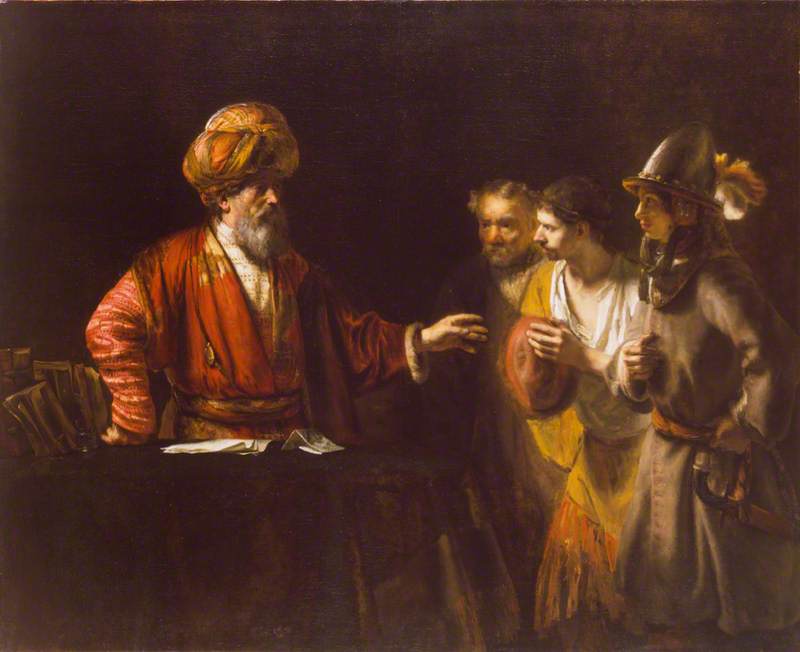How you can use this image
This image is available to be shared and re-used under the terms of the Creative Commons Attribution-NonCommercial-NoDerivatives licence (CC BY-NC-ND).
You can reproduce this image for non-commercial purposes and you are not able to change or modify it in any way.
Wherever you reproduce the image you must attribute the original creators (acknowledge the original artist(s) and the person/organisation that took the photograph of the work) and any other rights holders.
Review our guidance pages which explain how you can reuse images, how to credit an image and how to find more images in the public domain or with a Creative Commons licence available.
DownloadNotes
Add or edit a note on this artwork that only you can see. You can find notes again by going to the ‘Notes’ section of your account.
There has been in the past, and remains, uncertainty about the subject. It has sometimes been identified as the parable of the Unmerciful Servant (Matthew XVIII, 23–35) where a king forgave a servant’s debts, only to find the servant refusing such leniency to a fellow servant. An alternative reading is as an illustration of the story of the Centurion Cornelius (Acts X: 1–8). Cornelius had a vision of an angel, who instructed him to send men to fetch the apostle Peter from Joppa. Cornelius, here depicted as the lord of his household rather than as a military commander, did as the angel told him. He summoned ‘two of his household servants, and a devout soldier of them that waited upon him continually’, a description which accords with the appearance of the men who stand in attentive poses on the right.
Title
The Centurion Cornelius (The Unmerciful Servant)
Date
c.1660
Medium
oil on canvas
Measurements
H 176.5 x W 216.2 cm
Accession number
P86
Acquisition method
acquired by Richard Seymour-Conway, 4th Marquess of Hertford, 1848; bequeathed to the nation by Lady Wallace, 1897
Work type
Painting

